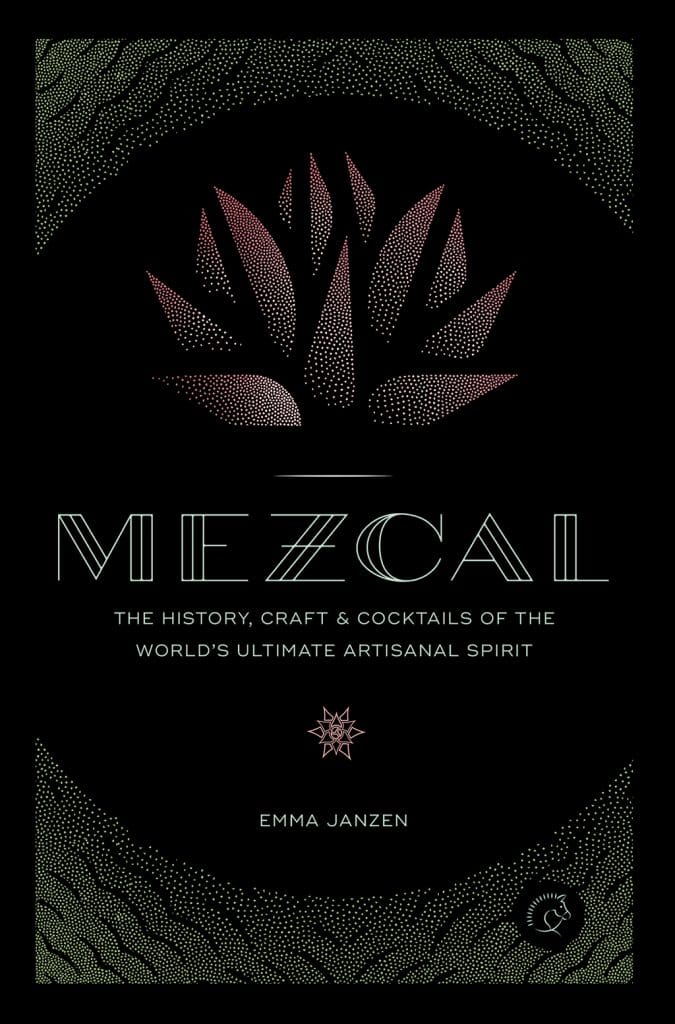
(As you’ll read Emma is Chicago based so it’s only natural that we have a book release party during this weekend’s Mexico in a Bottle Chicago pre-game show. We’ll be at Estereo 3-6PM this Saturday so drop on by to talk to the author yourself and have a cocktail while you’re at it.)
I had the pleasure of meeting Emma Janzen at Tales of the Cocktail this summer but it’s only since then after reading “Mezcal: The History, Craft & Cocktails of the World’s Ultimate Artisanal Spirit” and chatting with her that I’ve had the chance to unpack the themes in her book and the process that she took to get there. She worked her way up through daily journalism in Austin before jumping to Chicago where she’s the digital editor for Imbibe Magazine. Those years in Austin gave her a cat bird’s seat to the dramatic growth of mezcal within the already ascendent cocktail culture. As she puts it she was so into mezcal that she “tried to write about mezcal as often as editors would let me so I wrote an article for Imbibe about all the mezcalerias opening in America” which caught the eye of an editor at Quarto Publishing.

The resulting book is a tremendous distillation of mezcal and where we are right now with the industry. It’s written in such a straightforward manner that it’s deceptive – she manages to really dig into the big issues of the industry and cut them down to size so that anyone can understand them. That’s rare since so many of us are so deeply engaged with the people, issues, and trends that it can be really difficult to give that simple answer and provide a great introduction. Well, this is it, the introduction of “Mezcal: The History, Craft & Cocktails of the World’s Ultimate Artisanal Spirit” itself should be required reading for anyone as a Mezcal 101.
As Emma told me “I wanted to make the subject matter easy to understand so people who’ve never had the spirit could get excited about mezcal, but also write something that’s detailed and interesting for people like myself–mezcal nerds, if you will–so that it wouldn’t be boring, either.” That’s not to say that it’s over simplified, the topic of mezcal is rendered cleanly and so succinctly that it also is a great reminder of just what’s happened in the mezcal industry.
Take Judah Kuper and Vago. I vividly remember meeting him the first time he was on a sales swing through San Francisco and thinking ‘this guy is great and he has great juice, and the whole line is really something new.’ That historic moment was an inflection point for the industry. It was right when all of Ron Cooper’s evangelizing started breaking through in a bigger cultural wave, and right when a lot of brands like Judah’s emerged with a new diversity of ideas of what mezcal could be. Suddenly the whole silvestre space opened up, then cocktail mezcals, then regional variations. But the trend went the other way as well with a focus on the makers and the details of production. Vago’s hand created labels with clear descriptions of who made that mezcal and what it was made out of was a refreshing approach to the American market and a distillation of the traditional listage already embraced by places like Mezcaloteca and many others.
America was clearly ready for that moment, it’s lived through a contentious love affair with tequila as a hot new date which then got too much plastic surgery. It’s also living through a local, organic, back to the roots culinary movement which impacts everything we do. When Emma and I were talking about this and why Vago hit the moment right but she also pointed out just how dedicated Vago is at bringing their traditional mezcals to America:
“If we’re talking in terms of agave spirits as a whole, the tequila category has been so flashy for so long, with grand bottle designs, huge marketing budgets, etc. Part of the reason why I think brands like Vago have hit a vein is that many drinkers were kind of tired of all of that peacocking. There was a lack of authenticity happening in the larger agave spirits world, and then mezcal came along right around the time that people started seeking out more down-to-earth products, ones where you know the people who are making it and what their values are. Vago fits that bill; They are truly no-bullshit people who also make really great mezcal.”
That’s the same attention to detail and fealty to tradition that really distinguishes mezcal. It’s what got people excited about Del Maguey, what people see when they visit palenques, and the story that drinkers respond to even if they’ve never been to Mexico.
Emma has a great quote from Chicago’s own Mexican food popularizer Rick Bayless talking about how it used to be in Mexico:
“I first got into mezcal culture forty years ago when I was living in a small village in the state of Guerrero….There was one guy who was the maestro mezcalero and he would oversee production in that particular village. It was like having a bakery in town where you would take your dough to the baker and he would bake it for you. A lot of village life was like that. Families specialized in different things.”
My how things have changed. And that’s the rocketship that we’re on now that is moving so fast to such a distant horizon that we’re all starting worry, ’will this destroy mezcal?’ – ‘what about sustainability?’ – ‘what about the culture being transformed by globalizing a local spirit?’ But Emma is also good on these issues because she approaches them in such a succinct fashion. Why bother with industrially produced mezcals? She just says they’re “boring” and gets back to talking about the traditionally produced mezcals because they’re the interesting ones. The same goes for the big ball of wax that we call sustainability. The quote that she gets from Esteban Morales Garibi who, incidentally, will be pouring at this Sunday’s Mexico in a Bottle Chicago and delivering a presentation, really nails it when he says:
“If we’re going to spend the time talking about the issues and not the people who really know how to do this, these people will stop doing it. If we lose the people, we lose the knowledge and then we lose mezcal. We could have a happy forest full of agaves without any mezcalero.”
I was rolling along enjoying this book when I hit the somewhat inevitable cocktail section that dominates the later half of it and had that reflexive reaction I always have when this happens with spirits books: I really want to know more about the spirit, I already have tons of cocktail books for the recipes. But that reveals my puritanical streak because the more recipes I read, the more I realized that they provide an X-ray of our American drinking culture. It’s a paean to the creativity behind the American bar and a micro-history of cocktail culture’s rapid evolution over the past 20-30 years. Emma said:“I wanted to pay homage to all the bartenders who helped bring mezcal to us, by way of the cocktail.”
Like it or not, we are a cocktail culture so embracing and describing it in this fashion is kind of like walking through an anthropology museum of human evolution and looking at contemporary America through the prism of our bar culture. And then there’s the fact that cocktails can be the gateway to sipping. Anecdotally I hope it’s true, Emma swears by it:
“Americans needed to have a reference point to understand a spirit as complicated as mezcal, so simple drinks that have been widely accepted like the margarita or negroni are great ways to create that entry point for people. If you give someone who’s never had mezcal a 100-proof mezcal they might go, ‘holy crap, no way!’ But if you ease someone into mezcal through a cocktail, it works. I’ve seen so many people go from only accepting mezcal in a cocktail to seeking out bottles they can sip, because their first introduction was through a mezcal margarita or similar.”
Plus you can see another trend in evidence here, as Susan and I have been mentioning and people like Emma have clearly noticed, cocktail culture isn’t isolated to these United States any longer. It’s global in nature and that means Mexican bartenders are finally exercising their creative license with their national spirit as well. “In Mexico City bartenders are still only starting to bring in the good mezcal to higher end programs like Limantour or restaurants like Pujol because it was never cool. They couldn’t understand why Americans were going gaga over mezcal because that was something their dad drank or that the drunk guy in the corner drank.” Now the circle is almost complete.
What’s the next act? You can ask Emma that this Saturday at the book release party or book your ticket for the San Antonio Cocktail Conference in the new year where she’ll be discussing the diversity of Oaxacan terroir and how it impacts mezcal.

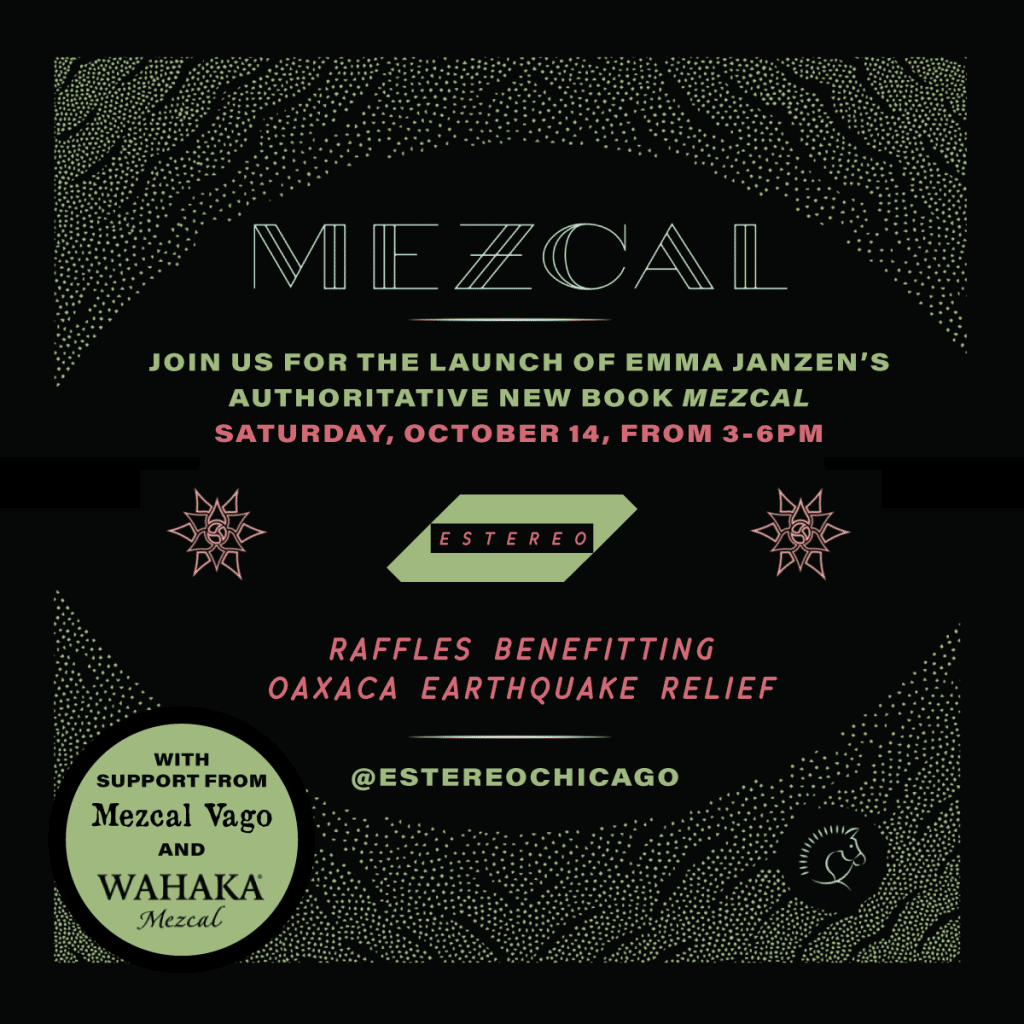
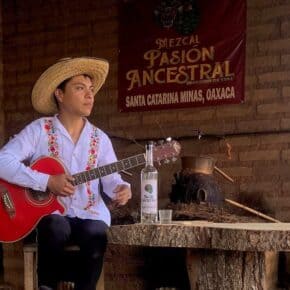
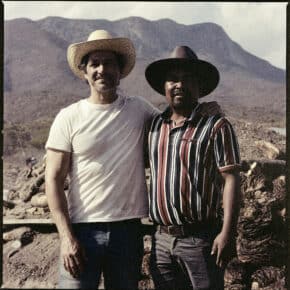
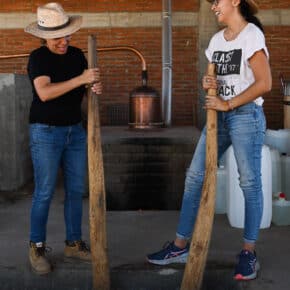









Leave a Comment